Latest Posts

Keynote Video: Using Simulation to Develop Reliable Audio Transducers
An engineer from a loudspeaker company discusses using simulation to design a component that can handle fatigue, environmental conditions, and user wear and tear. Watch the presentation.
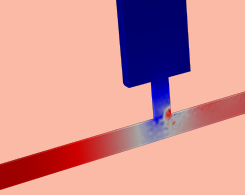
Is That a Ghost? Vibroacoustic Explanations for False Poltergeists
Creepy sounds are often misinterpreted as paranormal activity, when in fact, they can be explained with vibroacoustics, mechanical resonance, and attenuating sound.

Award-Winning Papers and Posters: COMSOL Conference 2017 Boston
The COMSOL Conference 2017 Boston featured over 100 interesting and innovative presentations from COMSOL Multiphysics® users about their current work. 6 of these projects took home awards.

Happy Birthday, Margaret Hutchinson Rousseau
Margaret Hutchinson Rousseau, the first woman to join the American Institute of Chemical Engineers (AIChE), is known for designing the first commercial penicillin plant during WWII.
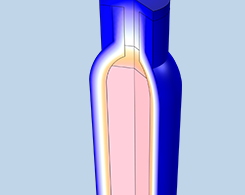
Predicting How Long Coffee Stays Warm in a Vacuum Flask
Do you use a vacuum flask to keep your coffee or tea warm? Try simulating the natural convection cooling in one of these containers to see exactly how long your beverage will stay warm.
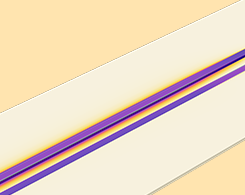
Analyzing Time-Domain Reflectometry for 2 Electrical Designs
Here are 2 examples of analyzing the signal integrity and time domain reflectometry in electrical devices: a high-speed interconnect and a set of parallel microstrip lines.
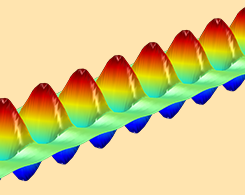
Simulating Extraordinary Optical Transmission at Terahertz Frequencies
One potential approach to improving medical imaging, quality assurance, and other terahertz applications is extraordinary optical transmission, a process that can be studied with RF simulation.
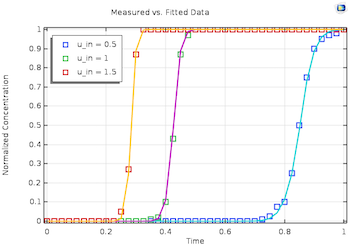
Multiparameter Optimization with a Least-Squares Objective
Learn how to estimate parameters using multiparameter optimization, which will automatically adjust your model based on an underlying data file of experimental parameters.

Designing an Ultrasensitive Imaging System Based on Mantis Shrimp
Mantis shrimp have one of the most advanced visual systems. Researchers used these organisms as inspiration for a medical imaging method that could help improve cancer detection.

When Stars Align (and Collide): A Historic Gravitational Wave Discovery
Imagine going from only reading textbooks with no pictures to seeing a 3D movie. Thanks to a 2017 discovery, astrophysicists experienced a comparable improvement in how they see the universe.
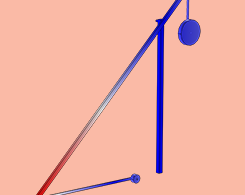
What Is the Physics Behind a Counterweight Trebuchet?
A counterweight trebuchet, a siege weapon commonly seen in movies set in the Middle Ages and fantasy worlds, also happen to be an interesting multibody dynamics problem.
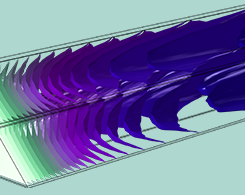
Modeling Surface Reactions in Porous Media and Reactive Pellet Beds
Reactive pellet beds have complex local geometries and undergo microscopic diffusion, but there is a way to simply and accurately simulate these devices in COMSOL Multiphysics®.

Happy Birthday, George Westinghouse
If you’ve ever ridden on a train or used electricity, than you have American inventor George Westinghouse to thank. Learn about how he changed the way we think about and use alternating current.
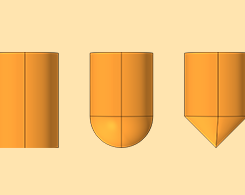
Analyzing Kelvin Probe Designs with COMSOL Multiphysics®
Kelvin probes, a type of MEMS technology, provide a nondestructive and contact-free way to measure the work function differences of various material combinations.
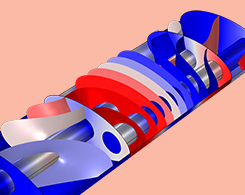
Evaluating the Effect of Shell Thickness on Muffler Performance
Guest blogger Linus Fagerberg from Lightness by Design follows up a previous post with a discussion of one design consideration for the radiated sound in a muffler design: shell thickness.
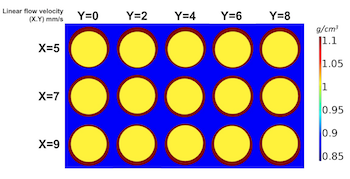
Improving IFE Target Fabrication with a Droplet Microfluidics Method
A common joke is that fusion energy is 30 years away, and always will be. Researchers are using simulation to tackle the challenges involved with of inertial fusion energy target production.
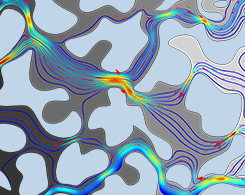
Computing Porosity and Permeability in Porous Media with a Submodel
Porous materials have complex geometries and may therefore be difficult to model. Setting up a microscale submodel is a useful approach to find the porosity and permeability of the medium.
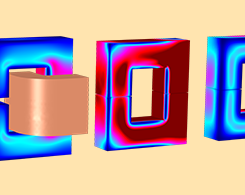
Analyze the Electrodynamics of a Magnetic Power Switch via Simulation
The AC/DC Module can be used to simulate electrodynamic devices, such as magnetic power switch circuit breakers. Follow along with this discussion to study the working principles of the device.
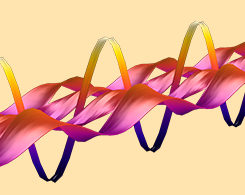
Silicon Photonics: Designing and Prototyping Silicon Waveguides
John Tyndall tried to control the most visible form of energy, light, using 2 buckets and some water. Today, there is a more advanced device for this purpose: a silicon waveguide.
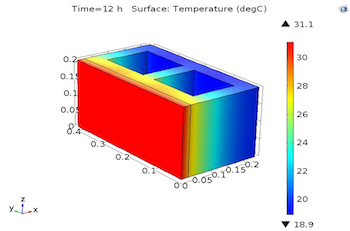
Studying the Thermal Performance of Phase Change Materials
Certain building materials, like plaster, are enhanced with phase change materials (PCMs) to assist in keeping buildings cool in the summer and warm in the winter. But how effective are they?

Happy Birthday, Sir Mokshagundam Visvesvaraya
Sir Mokshagundam Visvesvaraya was a civil engineer who used his talents to make many significant contributions to India’s infrastructure. His birthday is celebrated as Engineer’s Day in India.
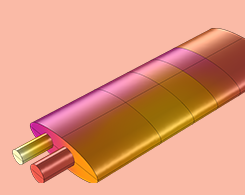
Predicting the Sound Emission of a Muffler Design via Simulation
Cars with subpar mufflers are annoyingly loud. Guest blogger Linus Fagerberg from Lightness by Design discusses a novel, simulation-based approach to predict noise generation in muffler designs.
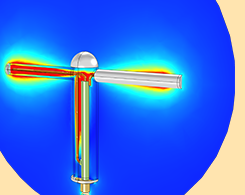
Optimizing the Geometry of Optical Antennas with Genetic Algorithms
What does antenna design have to do with the concept of natural selection? Although it may sound far-fetched, the basic principles of natural selection can be used to optimize antenna geometries.

Analyzing a New Droplet-Forming Fluidic Junction with Simulation
A novel oscillatory microfluidic junction design, called a “batwing”, is improving the field of droplet microfluidics by consistently producing uniform and complex double-emulsion droplets.
